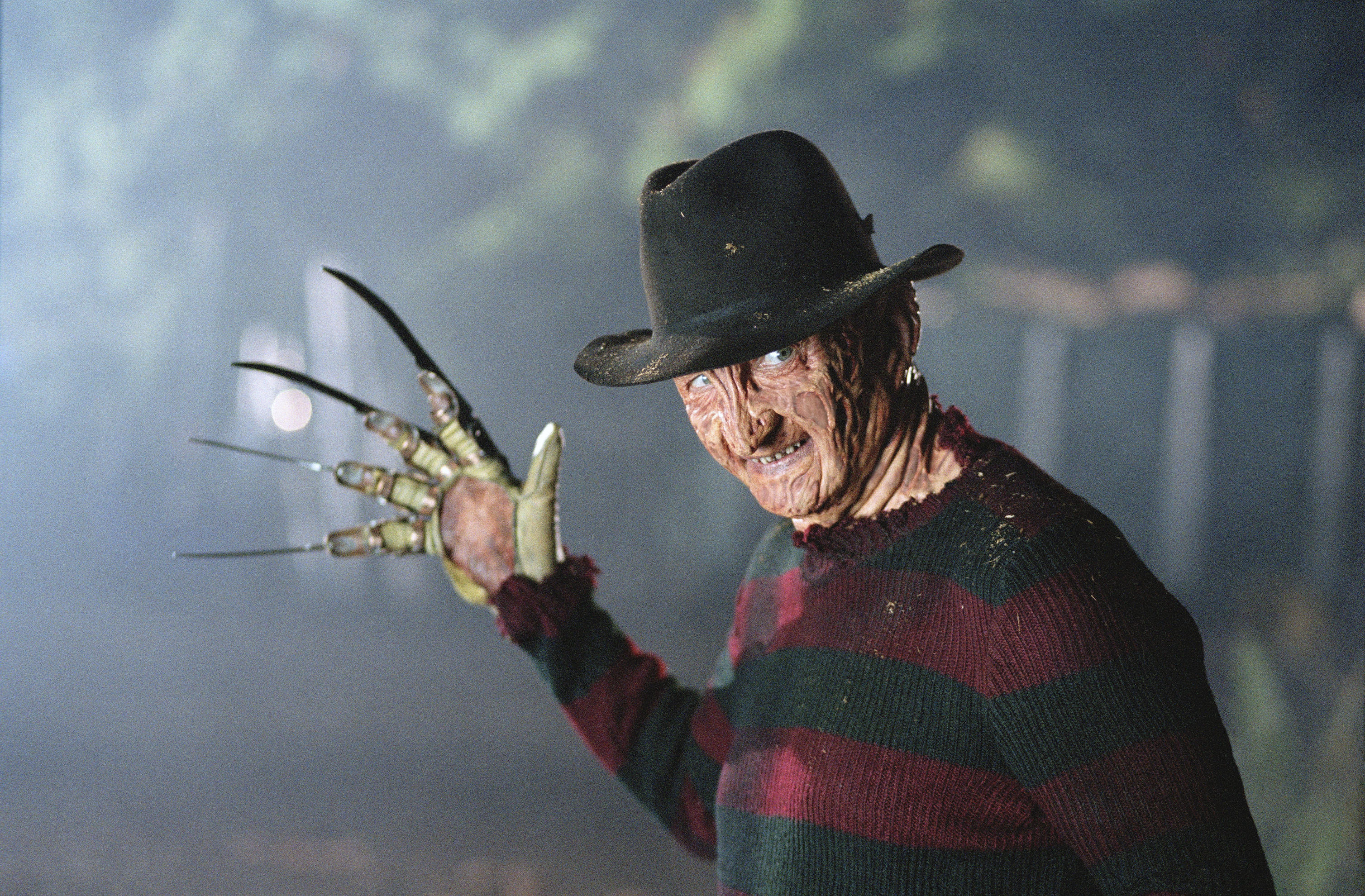
Everybody knows about Freddy Krueger, even if they’ve never watched any of the “A Nightmare on Elm Street” movies. Robert Englund’s dream-haunting villain is a pop culture icon who became a literal cartoon character and ended up on everything from sneakers to breakfast cereal.
Go back to the original “Nightmare” movies, though, and you’ll find a sadistic killer whose gleeful malevolence is often terrifying. Now is the perfect time to revisit the “Nightmare” movies or experience them for the first time, since they’ll be leaving Netflix at the end of this month.
The “Nightmare” collection on Netflix includes the first five movies in the series, plus original writer-director Wes Craven’s meta-sequel “New Nightmare” and the 2010 remake starring Jackie Earle Haley as Freddy Krueger. That’s plenty of “Nightmare” material for the average viewer, including my favorite installments in the franchise, although it leaves out the pseudo-finale “Freddy’s Dead: The Final Nightmare” and the crossover movie “Freddy vs. Jason.”
The best way to be introduced to “A Nightmare on Elm Street” is probably on a VHS tape at a middle school sleepover sometime in the late 1980s or early ’90s, but since it’s now impossible to replicate that experience, checking out the movies on Netflix is the next best thing. Turn out the lights, pop some popcorn and maybe cocoon yourself in a sleeping bag for added authenticity.
The Nancy trilogy is ‘Nightmare’ at its best

If you don’t have time to watch all of the “Nightmare” movies on Netflix in the next few weeks, the series can be pared down to the three excellent movies starring Heather Langenkamp as Nancy Thompson, with Wes Craven as the main creative force.
In 1984’s “A Nightmare on Elm Street,” teenage Nancy’s friends start mysteriously dying in their sleep after dreaming of a disfigured killer wielding a blade-fingered glove. She’s the only one determined and resourceful enough to take down Freddy, which she does despite the dismissals of the adults in her life, including her police officer father (John Saxon).
Both Langenkamp and Craven sat out the second movie, but they return for 1987’s “A Nightmare on Elm Street 3: Dream Warriors,” which features Nancy as the prematurely world-weary mentor to a group of teenagers in a psychiatric hospital. Freddy asserts more of the cartoonish persona he’s become known for, and Langenkamp balances Englund’s scenery-chewing with a sense of haunted regret as Nancy. She’s desperate to protect these teens from the same fate that her own friends faced when she was their age.
Nancy returns again, in a way, in 1994’s “New Nightmare,” which brings Craven back as well, for a self-reflexive story about Freddy escaping the movies and entering the “real” world. Langenkamp plays herself as a veteran actress struggling to assert her identity away from her most famous part, but she also plays Nancy, as the line between reality and the movies starts to blur. This Nancy/Heather is now a mother, taking on a protective role for her young son (Miko Hughes), still with the indomitable spirit and ingenuity that can vanquish Freddy one final time.
The other ‘Nightmare’ sequels are campy fun
Although they don’t come close to the Craven/Langenkamp movies, the rest of the “Nightmare” sequels streaming on Netflix are all entertaining to watch, albeit sometimes in a campy, ironic way. The first sequel, 1985’s “A Nightmare on Elm Street 2: Freddy’s Revenge,” is known more now for its blatant homoerotic subtext than for its plot or scares, both of which are pretty unimpressive.
Screenwriter David Chaskin and star Mark Patton deliberately snuck in a striking if somewhat haphazard metaphor about repressed homosexuality. Rather than kill people in their dreams, Freddy attempts to take over the body of teenager Jesse (Patton), who must resist letting Freddy “come out” at inopportune moments. It’s not a great film, but it’s a fascinating example of what was able to be hidden in plain sight in a mainstream genre movie.
There’s no fascinating subtext in 1988’s “A Nightmare on Elm Street 4: The Dream Master” or 1989’s “A Nightmare on Elm Street 5: The Dream Child,” but they both feature Freddy at his goofiest, with elaborate, ridiculous kills and enjoyably hammy performances from Englund. In “The Dream Master,” Freddy turns his victims into pizza toppings and cockroaches, and in “The Dream Child,” he force-feeds a victim to death like something out of a Monty Python sketch.
I’m a “Nightmare” completist, so I’ve also seen the modern remake, but there’s no real reason to bother with it, despite Haley’s best efforts to put a new spin on Freddy. Whether he’s menacing or silly, Freddy belongs to Englund, and he’s always worth dreaming about.
More from Tom's Guide
Sign up to get the BEST of Tom's Guide direct to your inbox.
Get instant access to breaking news, the hottest reviews, great deals and helpful tips.

Josh Bell is a freelance writer and movie/TV critic based in Las Vegas. He's the former film editor of Las Vegas Weekly and has written about movies and TV for Vulture, Inverse, CBR, Crooked Marquee and more. With comedian Jason Harris, he co-hosts the podcast Awesome Movie Year.

